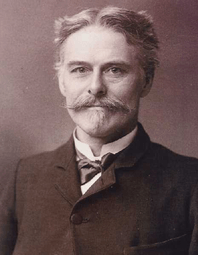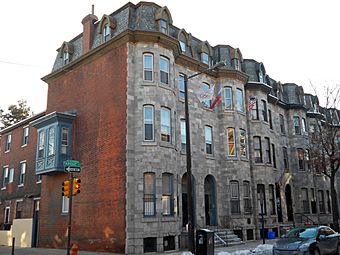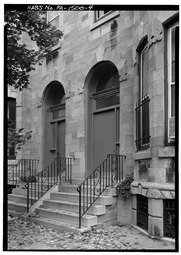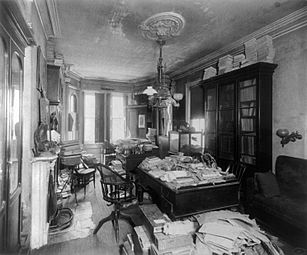Edward Drinker Cope House facts for kids
|
Edward D. Cope House
|
|
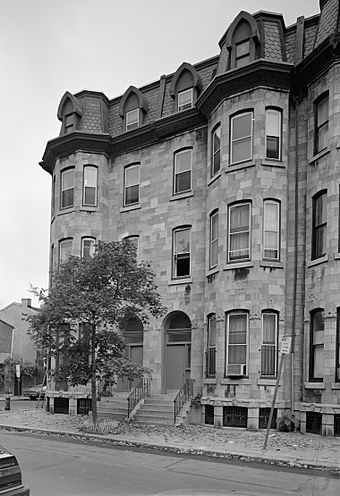
2100–2102 Pine Street
|
|
| Location | 2102 Pine St., Philadelphia, Pennsylvania |
|---|---|
| Built | 1880 |
| Architectural style | Second Empire |
| NRHP reference No. | 75001660 |
Quick facts for kids Significant dates |
|
| Added to NRHP | May 15, 1975 |
| Designated NHL | May 15, 1975 |
The Edward Drinker Cope House is a special historic home. You can find it at 2100-2102 Pine Street in Center City, Philadelphia, Pennsylvania. It was built in 1880. This house was the long-time home of Edward Drinker Cope (1840-1897). He was a very important scientist. Cope was a geologist (someone who studies rocks and Earth) and a paleontologist (someone who studies fossils). He also studied reptiles and amphibians. He was one of the top natural scientists in the United States during the 1800s. In 1975, this house was named a National Historic Landmark. This means it is a very important place in American history.
What Does the Cope House Look Like?
The Edward Drinker Cope House is actually two homes side-by-side. They are located on the southwest corner of 21st and Pine Streets. This area is near Rittenhouse Square in Philadelphia. The house is 3.5 stories tall. The very top floor has a higher ceiling.
The front of the house is covered with green stone. It is cut into rectangles and placed in a random pattern. The sides and back of the house are made of brick. The roof is a special kind called a mansard roof. The front of the house has rounded sections on the outside. In the middle, there are two arched doorways.
Edward Drinker Cope's Life in the House
Edward Drinker Cope bought these two homes soon after they were built in 1880. At first, he lived in the house at 2100 Pine Street. He used the house next door, 2102, for storage and as a workspace. Later, in 1886, he lost money from a bad investment. This meant he had to rent out 2100 Pine Street. He then moved into 2102 Pine Street and lived there until he passed away in 1897.
Cope's home on Pine Street was full of his scientific work. It had his papers, bones, and stuffed animals. He also kept specimens preserved in alcohol. These items covered his desks and even a makeshift shelf in his bathroom!
Cope was an amazing and talented scientist. He was especially famous in the field of paleontology. He was a main figure in a famous competition called the Bone Wars. This was a rivalry between scientists in the 1870s. They were exploring the American West and trying to find the most dinosaur fossils. Cope is considered one of the most important paleontologists of the 1800s. He is often mentioned with Othniel Marsh and Joseph Leidy.
Gallery





